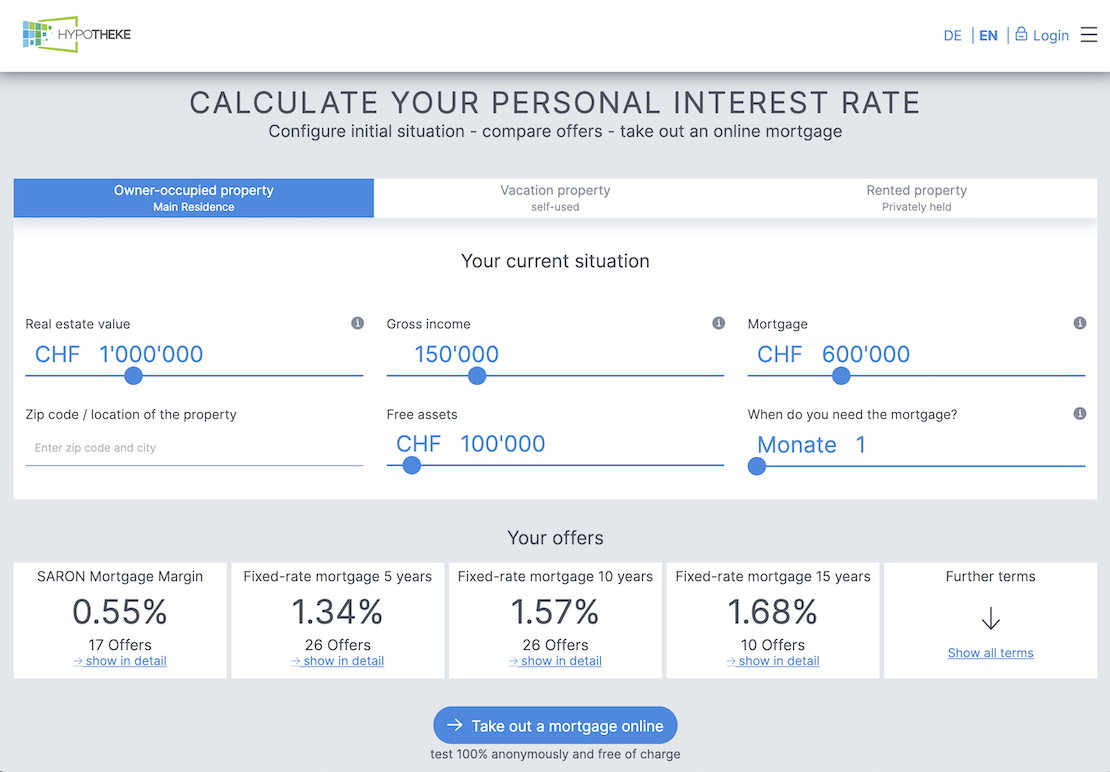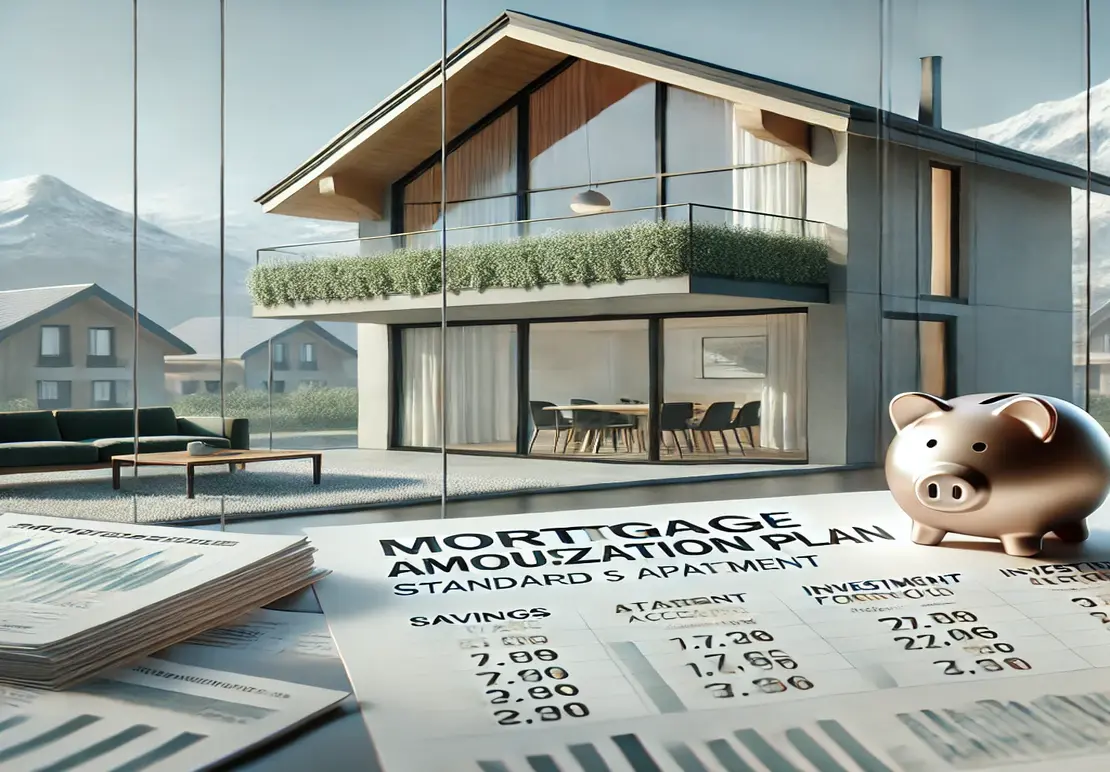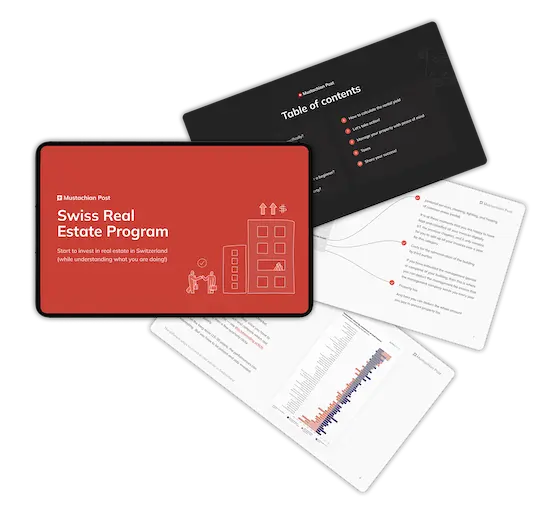Step 1 - Your mortgage capacity
I wish I had someone holding my hand some months ago when we started the process of buying our first home in Switzerland.
That’s the reason why I decided to write this sort of “guide” to explain you through which steps I went from research to finally getting the keys!
Once again, I don’t claim to be a real estate expert.
I simply want to share with you my experience so you might benefit from it as much as possible.
In this first part of the guide named “Mortgage capacity”, I’ll discuss how you can easily avoid to go deception after deception.
Who wants to experiment deception in his life? Certainly not you dear MP readers!
Be ready to enjoy your couch for some evenings, but also to get yourself out to talk to real people.
Buying a home is so exciting!
I want you to be the leader of your first purchase. And not the banks!
We’ll cover this point too.
1/ Gather your numbers
The first step in getting to know your mortgage capacity is to compute how much money you’ve got so far and how much you currently make.
In case you already did compute your net worth, you will already have almost all what you need.
Below are the four numbers you need to gather.
A/ How much cash are you ready to give away while still having enough to live?
Here we talk about cash and assets you may have at disposal.
As a Mustachian, you should consider to keep some cash cushion and not go full all-in poker style!
In this category, don’t forget to take into account money that people from your family could lend you.
In our case, we had a bit less than CHF 100'000 in cash but I knew I could also get some cash (CHF 10-20k) from my parents in case it would be really needed.
One sidenote while we talk about donation between family members and others: there are taxes that can be applied depending on the donated amount.
It also depends on which Canton you live in.
I found this very interesting Swiss donation taxes summary (source: Crédit Suisse) that shows you all the taxes numbers of your Canton for your situation - be sure to double check on your Canton’s website as this file is from 2015.
B/ How much money do you have on your 2nd pillar?
You can find this info on the paper issued once a year by your pension fund: it is called “termination benefits” (it’s “prestations de sortie” in French and “Austrittsleistungen” in German).
Our situation is a good usecase to explain you some tricky rules about the 2nd pillar.
Second pillar rule #1: Can’t exceed 10% of the home total value
A Swiss law got voted back in 2012 to assist people with their money - everyone is not a Mustachian unfortunately - so that they don’t go bankrupt…
This law limits the pension fund withdrawal so that it can’t exceed 10% of the real estate total value imposes that you have minimum 10% of the total value in cash.
In our case with our home value of CHF 700'000, it meant that the max we could withdraw from our 2nd pillar the min we should have would be CHF 70'000.
We didn’t have to brainstorm too much as we had less in total - being young can bring its own “advantages”!
UPDATE 30.01.2017:
Thanks to @pave’s comment I fixed a mistake in the paragraph above.
Second pilar rule #2: You must reimburse all of it if you sell
In case you sell back your property in some years, you will have to reimburse the money that you took out of your pension fund.
Second pilar rule #3: Can’t use this cash source to pay your notary
You can’t use this 2nd pillar money to pay the notary fees which are around 5% of the property value.
Second pilar rule #4: Withdrawal is taxed
There are taxes applied on your 2nd pillar withdrawal that you’ll need to pay about 1 or 2 months after the actual transaction.
Update 27.04.2016: thanks to the comment of Scafo, I have to notice you that in case you sell, you will get reimbursed the tax you paid (but you have to claim it).
You need to prepare your budget accordingly.
An example for the Vaud Canton: we used my 2nd pillar money which was worth CHF 29'500 and got a taxe invoice of around CHF 1'000.
You can use PostFinance online calculation tool to compute your own numbers (it works for both 2nd and 3rd pilar withdrawals).
C/ How much money do you have on your 3rd pilar?
This last figure is optional in your gathering as 3rd pillar are private pension fund, meaning it won’t be anyone else than yourself having decided to start one.
In case you have one, you have the right to withdraw part or all of it as that’s one of the three usecases allowed which are: property ownership, moving abroad and retirement.
You’ll find your number on the yearly status update sheet from your 3rd pillar company.
It’s called “surrender value” (in French it is “valeur de rachat”).
As for the 2nd pillar, the cash you withdraw from your 3rd pillar gets taxed.
In our case, we used CHF 20'000 from mine and got to pay CHF 500 in taxes.
Wife used CHF 16'000 and got a tax bill of CHF 360.
There is always this question whether one should use his retirement money to finance his home?
My opinion on the subject is that if you don’t buy something to gamble and try to beat the real estate market (i.e. if it’s a long term investment), I tend to prefer using my hard earned cash as I want instead of letting it rot in a low interest account that is regulated by state rules - with all the respect and trust I have for Swiss legislations.
D/ Your annual gross salary
Additionally to your net worth, one number you’ll need is your annual gross salary in order to know if you can assume the mortgage interests and your new home charges. This can be a deal breaker.
I’ll explain below how the check is calculated in Switzerland.
2/ Compute your mortgage capacity
Now that you gathered all your numbers, let’s compute your mortgage capacity ourselves before going to bank sharks.
You can use one of the many online tools for this.
I let you go to your preferred bank or insurance websites and check their online mortgage calculation tool - they almost all have one.
My preferred independent tool is the one from DL which gives you a very quick and accurate overview of your mortgage capacity.
Don’t hesitate to grab interest rates to start evaluating the current market options.
Nevertheless, for the sake of DIY on paper, let’s do some (basic) math together!
Our real life example computation
Let’s take our real life example to show you how to compute the thing on paper:
- Cash available = CHF 74'500
- 2nd pilar money = CHF 29'500
- 3rd pilar money = CHF 36'000
- __
- Total cash available = CHF 140'000
- __
- Mortgage capacity = CHF 140'000 * 100 / 25 = CHF 560'000
Short explanation: in Switzerland, banks ask for 20% of the home value as a cash down payment.
It is a must have requirement.
You also have to pay cash for notary fees which represents an additional 5% of the home value.
You can’t use the mortgage to pay them - this is theoric as some companies still find workarounds to help you finance it.
This leads us to a total of 25% cash as down payment in order to get a Swiss mortgage.
Don’t overlook this step and run your numbers yourself.
It will help you build confidence when you face bankers and avoid a “teacher-student” relationship.
They aren’t smarter than you.
The only key differentiator is the data they know.
You can learn it too.
Just to be clear, here we defined the maximum value of your mortgage, not your target value!
Don’t make your bank decide what you have to buy.
It’s you the leader of your home purchase.
And now that you have the numbers at hand, you know what you can look for and avoid to go deception after deception.
UPDATE 28.11.2024: I’ve written a comprehensive article to help you find the best mortgage in Switzerland.
3/ Check that you can support the mortgage and its charges
In step 1.d, I asked you to grab your annual gross income.
The goal is to make a last check to completely remove deception possibilities when you arrive at your banker’s office.
Continuing with MP’s household example - yeah I decided to disclose some more numbers dear voyeurs, let’s round our annual gross income number to CHF 145'000.
The money men rule is to check whether all interests + charges on one year aren’t higher than one third of your annual gross income(s).
Still based on our example, here is roughly how they compute it:
- Interests: our mortage is CHF 550'000 and to be safe, bankers take 5% interest rate to be sure you could still make it financially in case of market blackout, which gives us CHF 27'500 (= CHF 550'000 x 0.05)
- Charges: one usually says that total yearly charges should be around 1% of the total home value, so about CHF 7'000 in our case (= CHF 700'000 x 0.01)
- Amortization: as you have to reimburse part of your mortgage following different rules depending on your situation, one takes the rough estimation of 1% of the mortgage value for this theoric amortization check: CHF 5'500 in our case (= CHF 550'000 x 0.01)
- Leasing/credit: if you aren’t a real Mustachian yet (WTF?!?), you also have to add any leasing and/or private credit you may have contracted (and don’t forget alimony in case you are in this situation)
Here we go with a total charges theoric number for the MP household of: CHF 27'500 + CHF 7'000 + 5'500 = CHF 40'000.
Our theoric maximum capacity for charges is 33% of our annual gross income: CHF 145'000 x 0.33 = CHF 47'850.
Yipiiie, we are in the safe zone with our theoric maximum charges capacity of CHF 47'850 > our total annual charges theoric number of CHF 40'000!!!
4/ Challenge your computation with the reality
Once you have done your homework, get out and talk to bankers in order to get challenged about your situation.
Prepare all your numbers and visit them to listen to their conclusion regarding your mortgage capacity.
If you followed the step 2 of this article, you shouldn’t have many deceptions but it’s better to check theory against reality anyway.
And potentially you’ll be able to teach us even more stuff in case you learn something new!
While you are it, start to gather their interest rates so to see if what you found on the Internet was accurate or not (they often have special conditions compared to what’s on the web when you go discuss with them).
Important note: Don’t commit to anything at this stage
Indeed, you have no clue about what you will find as a home.
Anyway, you will be surprised about how they will treat your case very quickly as at this step you don’t have a real usecase on which they could lend you money.
Another tip: Visit companies where you are already a customer
You might have special rates there due to your loyalty.
The meeting should also get a bit faster as the bank/insurance may already have some or most of your personal information - or not.
Last advice: Make sure to have this 25% cash downpayment
Also try to have enough cash cushion so that you feel very comfortable giving away this huge amount of money.
This will help you to lead the negotiation game and not to have to prove anything more than needed from the first meetings on.
That’s what happened to us.
We don’t recommend.
Next step: Define the What
You now know exactly what is you mortgage capacity.
You also have a rough idea about current interest rates.
Next step for you is to start to define the what.
Stay tuned for the second part of this interesting home quest.
And please, if you’re on your way to home ownership, let us/me know about some crispy details of your situation. I’m sure I’ve still plenty of stuff to learn.





Last updated: April 24, 2016